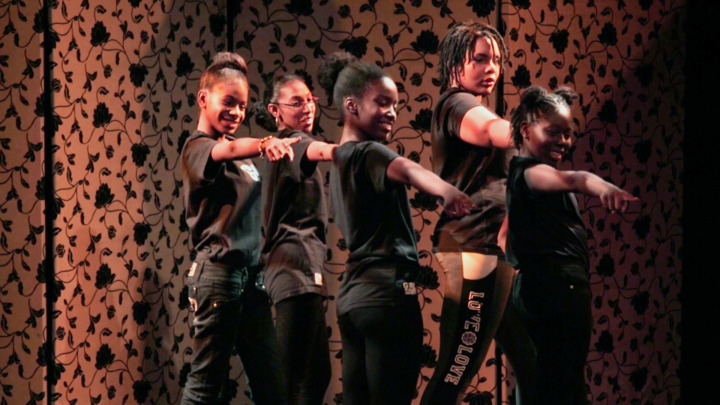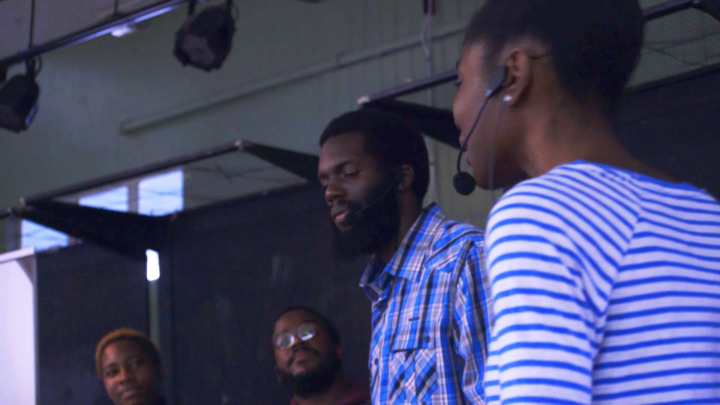And the ttff/18 Winners are…
The thirteenth edition of the trinidad+tobago film festival culminated in a love-fest of awards and accolades for local filmmakers at the ttff/18 Awards Ceremony at Central Bank on Tuesday 25 September.
THE BEST FILM AS DECIDED BY A YOUTH JURY sponsored by BP Trinidad and Tobago.
Buscando al Zorro (Looking for Zorro) – Wigner Duarte
El Chata (The Sparring Partner) – Gustavo Ramos Perales
Las Hijas De Abril – Michel Franco
Brown Girl Begins – Sharon Lewis
Le Rêve Français: Part 1 – Christian Faure WINNER
Sprinter – Storm Saulter
ttff/18 FUTURE CRITICS PRIZE
For the third year, this initiative sought to prepare students of the Ken Gordon School of Journalism at the College of Science, Technology and Applied Arts of Trinidad + Tobago (COSTAATT) for the rigour, best practices and industry standards of critical film analysis and festival reporting.
Ten students from the programme were selected to write critical reviews of films under the mentorship of film critic and journalist, BC Pires, for posting on the ttff website and social media platforms during the Festival. Now, at the conclusion of the Festival, the best Future Critic has been selected on the basis of the quality of their writing and analysis, their ability to meet tight deadlines, and the number of reviews published.
Celine Dimsoy WINNER
THE PEOPLE’S CHOICE AWARD FOR A SHORT FILM Sponsored by FILMTT
Mangroves WINNER
THE PEOPLE’S CHOICE AWARD FOR A DOCUMENTARY FILM Sponsored by FILMTT
Carnival Messiah WINNER
THE PEOPLE’S CHOICE AWARD FOR A NARRATIVE FEATURE FILM Sponsored by FILMTT
Hero: Based on The Life and Times of Mr. Ulric Cross WINNER
CARIBBEAN FILM MART BEST PITCH PITCH Sponsored by BP Trinidad + Tobago
The 15 participants in the Caribbean Film Mart were invited to pitch their project at the end of the 2 day mart workshop. 3 international film professionals adjudicated this process.
The participants and their projects are:
Dance the Cocoa – Juliette McCawley
Mas Slaughter – Christopher Din Chong
The Jaguar – Ryan Khan
Virus – Michael Rochford
Steel – Glenford Adams
Paul Pryce – The Deliverer
Jamil Agard –
Igual Paraise – Shea Best
Wishing for Wings – Kim Johnson
Silk Road – Janine Mendes-Franco
Trinidad’s Missing – Reynald Seydass
Hey Handsome – Roderick Weever
Fairway – Kafi Kareem Farrell WINNER
Intersection – Khrystian Ramlogan
Right and Left – Sonja Dumas
JURY AWARDS
Every year the ttff invites regional and international filmmakers and film professionals to adjudicate a selection of films
The ttff/18 jury are:
Ida Does, Filmmaker from Suriname
Renee Robinson, Film Commissioner for Jamaica
Gustavo Graef Morino, filmmaker from Chile
THE JURY PRIZE FOR THE BEST TRINIDAD+TOBAGO SHORT FILM Sponsored by BP Trinidad + Tobago
The Deliverer – Paul Pryce
Mangroves – Teneille Newallo
Venus and Magnet – Elspeth Duncan WINNER
Black Hair – Miquel Galofre
Live Bait – Dominic Boos
THE JURY PRIZE FOR THE BEST TRINIDAD+TOBAGO FEATURE FILM Sponsored by BP Trinidad + Tobago
Unfinished Sentences – Mariel Brown WINNER
Hero: Inspired by the Extraordinary Life and Times of Mr. Ulric Cross – Frances-Anne Solomon
The trinidad+tobago film festival (ttff) celebrates films from and about the Caribbean and its diaspora, as well as from world cinema, through an annual festival and year-round screenings. In addition, the ttff seeks to facilitate the growth of Caribbean cinema by offering a wide-ranging industry programme and networking opportunities. The ttff is given leading sponsorship by BP Trinidad and Tobago, the Ministry of Community Development, Culture and the Arts; supporting sponsorship by The National Gas Company of Trinidad and Tobago and Republic Bank Limited; and contributing sponsorship byFilmTT and The National Lotteries Control Board (NLCB).







